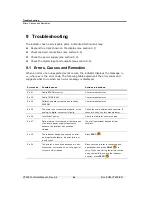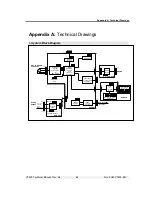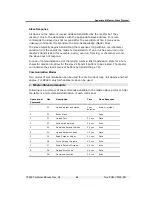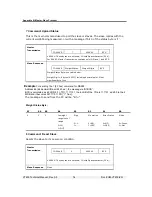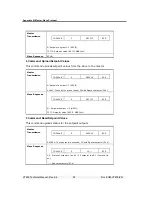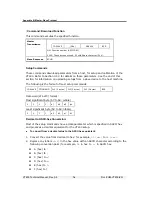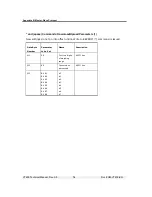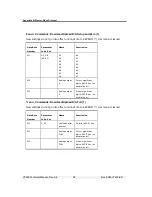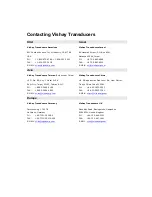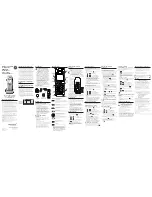
Appendix B: Master-Slave Protocol
VT400 Technical Manual, Rev. A5
68
Doc
#
UM-VT400-EN
iii. Data Block Format
All communication is performed using nine-byte messages with a standard format:
ID SLAVE
COMMAND
DATA
BCS
Message Components
Name Length
(bytes)
Hex Code
Description
ID Slave
1
41h - 5Ah
Slave identification character (A-Z,
or @ for command to be executed
by all units on the network.
Command
1
20h - 3Fh
Command type.
Data
6
x
The data associated with the
command, or data from slave. If
no data is associated with the
command send 6 space characters
(20h).
BCS
1
x
Block checksum. The XORSUM of
the six LSB of all bytes. Two most
significant bits are always set to
zero: 0 x x x x x x
iv. Communication Process Overview
The main type of master-slave communication between the host and the VT400
processor is when the master addresses a slave unit with a request for information,
and the slave responds by transmitting the data requested by the master.
Master Transmission
A communication session is started when the master processor transmits a command
to a slave. In most cases the slave does not respond immediately. The master scans
for status with a
Status
(?) command. If the slave is ready to respond, then –
depending on the initial command – the slave responds either by sending data or by
echoing the data received. If status data is ready, the slave will begin transmitting to
the master with a three-msec delay. If the master does not receive a response within
the appropriate interval the scan is rejected: for example, in the case of auto self-
calibration, which occurs regularly when the scale is stable. This reduces unnecessary
wait time of the master during polling.
Response time to a command varies and depends on the execution time of the
command. Multiple scans may be needed until the response is received. The
communication session is ended either when a response arrives or when the timeout
period has passed.







